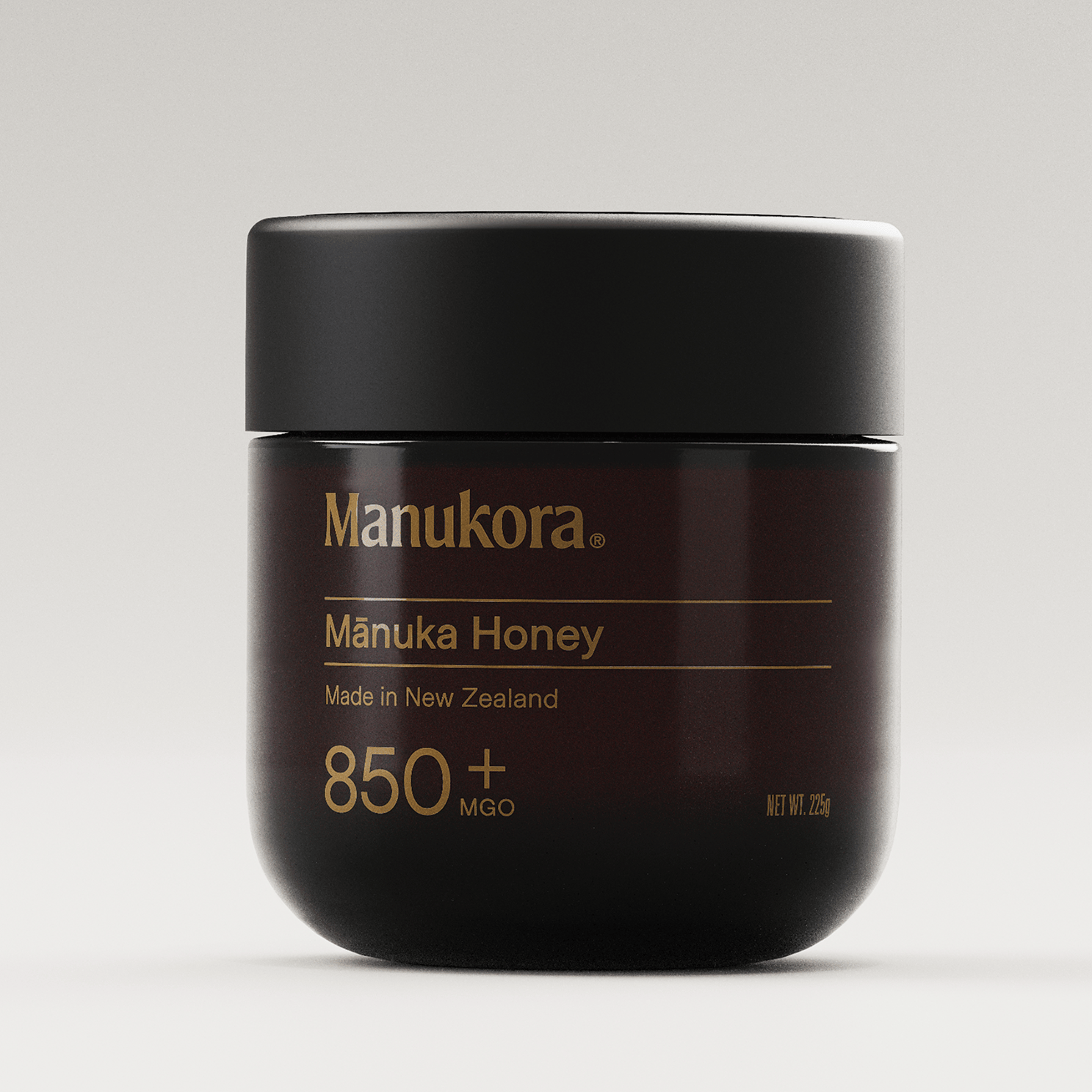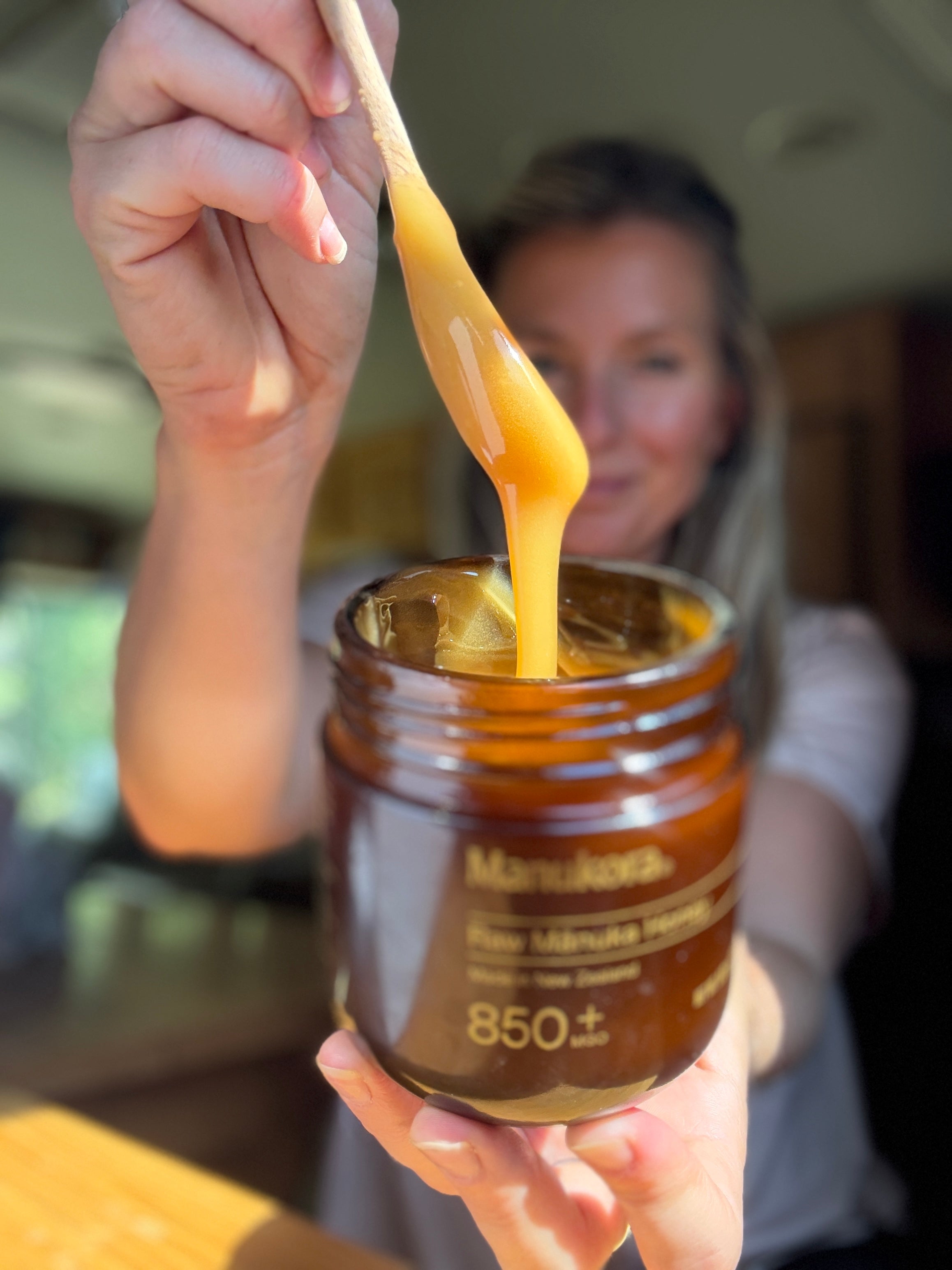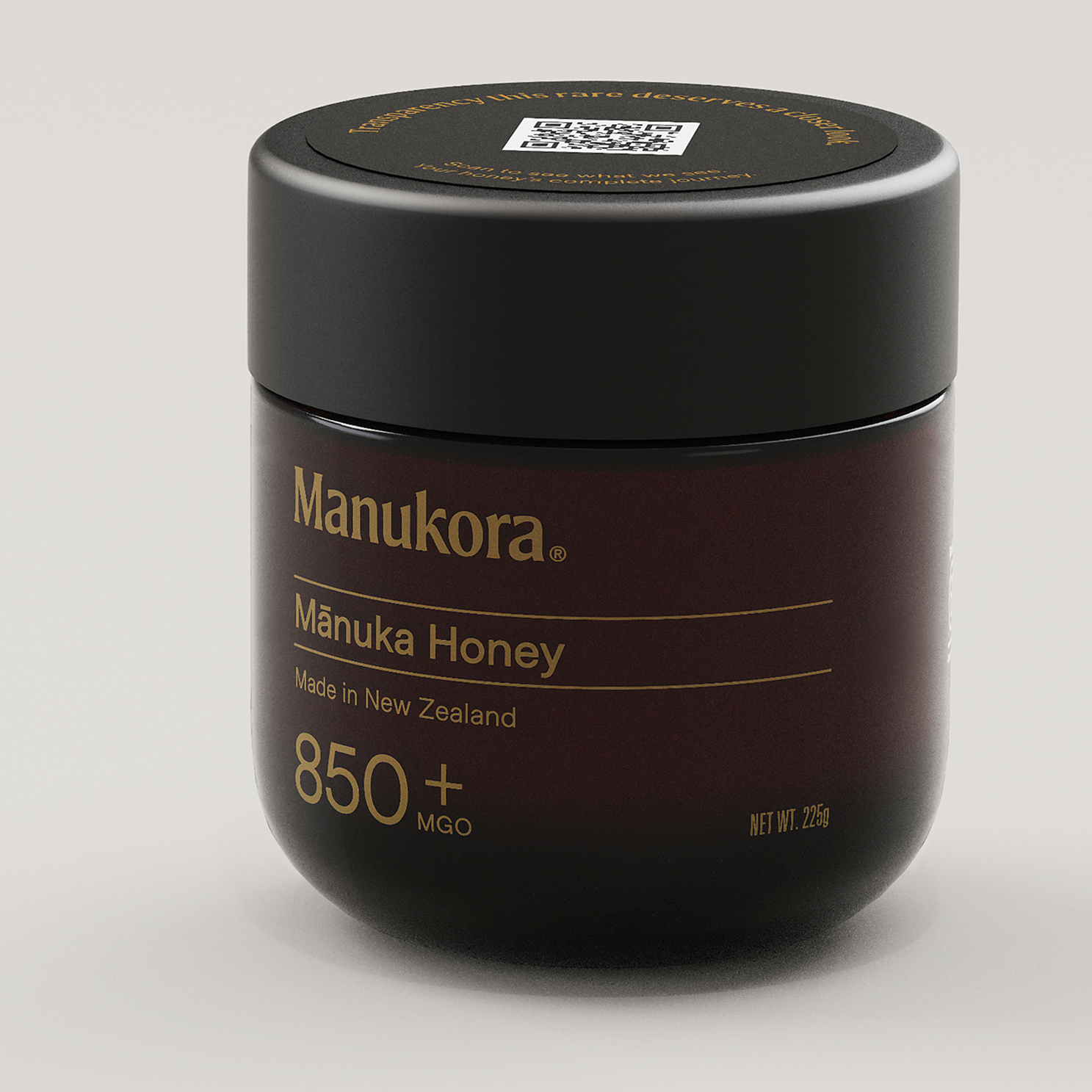What is Mānuka Honey?
Mānuka honey is not your typical honey – it’s richer, darker, and creamier, with a taste all of its own.
Plus, it has a compound unique to Mānuka honey called methylglyoxal (MGO).
Try Manukora Honey


What is MGO?

Unique to Mānuka honey, methylglyoxal (MGO) is a naturally occurring compound found only in this rare honey.
Found naturally in Mānuka tea tree nectar, MGO is transferred to our honey by our incredible bees.
Find your MGO Grade


The higher the MGO, the higher the concentration of other beneficial bioactives.

Certified MGO 600+ • Smooth, floral flavour

Certified MGO 850+ • Rich caramel and toffee notes

Certified MGO 1000+ • Rare, full-bodied intensity
Where does Manukora honey come from?
Mānuka honey can only be produced in New Zealand from the nectar of the Mānuka tea tree flower. It blossoms for two to six weeks during the summer, and bees collect the nectar and pollen.
All Manukora Honey is ethically produced and sourced from New Zealand and you can check the origin of your batch by scanning the unique QR code found on your honey.

Why make the switch from regular honey to Mānuka honey?
Regular honey is often processed and pasteurized with high heat – this destroys many of the naturally occurring and beneficial nutrients.
Even if you purchase raw honey, you still won’t find ingredients like MGO. You can feel good knowing that all Manukora is packed with antioxidants, prebiotics, and nutrients.
Save 38%
on our


Superhoney Starter Kit
Consistency is delicious. Make our 100% raw, traceable honey part of your daily ritual — loved for its rich taste and purity.
Shop The Kit

Science-backed goodness:

Naturally occurring bioactive compounds

Rich in methylglyoxal (MGO), lab verified

Polyphenols from mānuka nectar

From hive to jar, traceable

FREE

Mānuka
Guidebook
FREE

Wooden Dose Spoon
The Art of Ethical Beekeeping
Our beekeepers practice the Art of Ethical Beekeeping - a traditional way of beekeeping that prioritizes the care of our bees and their environment. We look after our bees, and they look after us.
01
Low Hive Number Per Site
Our beekeepers keep hive numbers low to ensure bees have access to diverse pollen sources and plenty of nectar to feed – and avoid any risk of overcrowding the bees.

02
No Excessive Hive Transportation
Our hives are not shifted around for pollination, limiting the risk of injury to the bees.

03
Honey Is Saved For Winter Months
We don't harvest all of our bees' honey, and leave enough in the hive to get them through winter. This is an important step to ensure the health of the bees and the quality of Manukora honey.

04
Free From Environmental Toxins
Our hives are placed in remote forests and are free from environmental toxins and pesticides – and we verify this every batch with 3rd party testing.

Frequently Asked Questions
What is Mānuka honey?
Mānuka honey is not your typical honey – it’s richer, darker, creamier, and loaded with 3 times as many antioxidants. Plus, it has a unique antibacterial compound called methylglyoxal (MGO).
What does MGO mean?
Methylglyoxal (MGO) is the unique naturally occurring antibacterial properties in Mānuka honey. A higher MGO value indicates higher antibacterial activity, it also indicates higher levels of other active, beneficial compounds in the Mānuka honey.In simple terms, the higher the MGO, the more potent the honey is.
How is Mānuka honey different to local honey?
While we wholeheartedly support the wonders of local honey and its array of benefits, Mānuka honey stands in a league of its own. Produced exclusively in the remote Manuka tea tree forests of New Zealand, it boasts exceptional levels of bioactive properties, such as MGO, Leptosperin, and oligosaccharides that are not found in other honey types.
Why is Mānuka more expensive than regular/local honey?
Mānuka is a rare honey variety produced only in New Zealand with unique beneficial compounds not found in regular/local honey. It is highly superior to regular highly processed honey found in your local grocery store. Most regular honey in grocery stores has either been heated to high temperatures (which removes the beneficial properties) or blended with lower-quality sweeteners.
Compared to other types of honey, Mānuka is darker in color, has a richer flavor profile, and a much thicker texture. This delicious, creamy caramel honey is also packed with bioactive compounds not found in other honey, including the unique, naturally occurring, antibacterial methylglyoxal (MGO), as well as a number of unique antioxidants and prebiotics.
You can read more about this topic on our blog.







